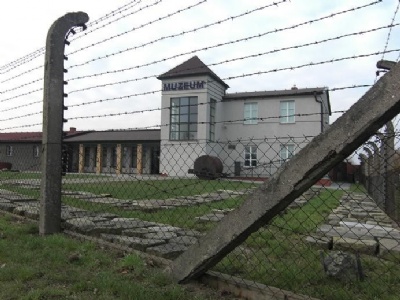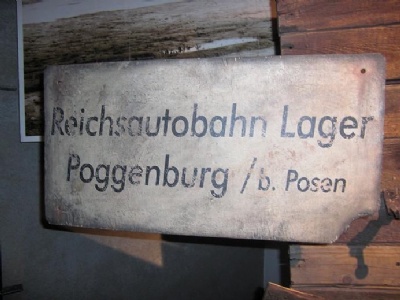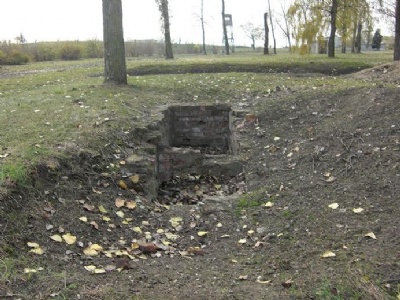Zabikowo
Zabikowo is located on the southern outskirts of Poznan next to a large highway (A2) and a small community called Lubon. In 1940, the Nazis established two forced labor camps in Lubon called Reichautobahn Lager Poggenburg whose Jewish prisoners were forced to work on the construction of a highway (Autobahn). The Nazis planned to link all major cities within the German empire through major highways and the job to do this was given to various private firms. In December 1940, the first 638 Jewish prisoners were sent to Poggenburg to begin construction of a highway between the former german/polish border at Frankfurt am Oder and Posen. All along the route, a total of 24 Reichautobahn Lager were established with a total of about 10,000 Jewish prisoners wwere used as slave labor. The jews came from various ghettos within Wartheland district.
The conditions for the prisoners were primitive and they were housed in wooden barracks. As the military situation worsened on the eastern front in 1942, these Reichautobahn camps began to be dismantled. All industry was more or less focused on war production. Projects that were not necessary for the war effort were phased out, including motorway projects. The prisoners were instead sent to other camps and prisoners who were too weak to work were murdered, some of them in the extermination camp at Chelmno. Part of the camp in Zabikowo was demolished by the Nazis in 1943 while other parts (barracks) were kept.
In connection with the dismantling of the Reichautobahn Lager, a prison on the site was seet up in April 1943, by Posen Gestapo. A few barracks that previously belonged to the Reichautobahn Lager were taken over by Gestapo and surrounded by both wall and barbed wire to prevent escape. The prison was called, Polizeigefängnis der Sicherheitspolizei und Arbeitserziehungslager in Posen – Lenzingen, and was a branch of the prison at Fort VII, Posen.
When Fort VII was closed in 1944, the remaining 750 prisoners, along with the 80-strong guard force, were sent to Zabikowo. The prison was divided into a male and female section and political and criminal prisoners were separated. The prison was a temporary isolation prison where prisoners had to sit for shorter or longer periods before they were sent to concentration camps. Some prisoners were imprisoned for several months and conditions can be equated with other Nazi prisons and concentration camps.
Those sent to Zabikowo were suspected of hostile activities and subjected to both interrogation and torture. For some, Zabikowo was a final stop while waiting for execution. In addition to Polish citizens, russians, slovaks, hungarians, luxemburgers, americans, dutchmen and deserters from the german army were imprisoned. A different category of prisoners were Poles who were sentenced to so-called weekend sentences. These worked in German companies/industries and had been sent to Zabikowo for disciplinary reasons. A punishment that did not last more than a weekend, but that would make them disciplined and behave at work.
Barely 22,000 people passed the prison camp in the almost twelve months it existed. There are 290 confirmed deaths. At the end of January 1945, the camp was evacuated and the remaining male prisoners were sent to Sachsenhausen. The female prisoners were sent to Ravensbruck. The SS set the camp on fire hoping it would destroy everything about the crimes committed in the prison camp. including dead bodies. The Soviet army captured Lubon and liberated the camp on January 26, 1945. No prisoners were left, only charred bodies.
Current status: Partly preserved/demolished with museum (2011).
Address: ul. Niezlomnych 2, 62-031 Lubon.
Get there: Car.
Follow up in books: Höhne, Heinz: The Order of the Death’s Head: The story of Hitler’s SS (1969).








A surprisingly interesting and modern museum that is easily accessible by both car and public transportation. The museum has understood that too much information can actually scare away visitors and therefore there are many objects on display. It is also positive that part of the former camp area is next to the museum and gives the visitor a visual idea of what the camp looked like. A simple but informative museum with a good balance between information and visual impressions.